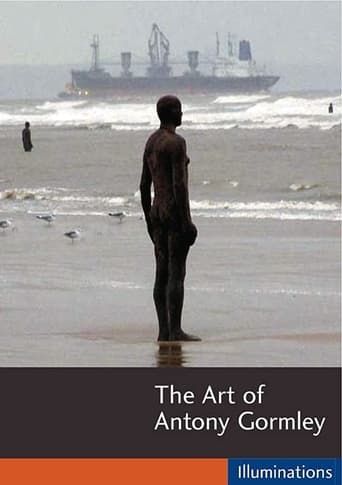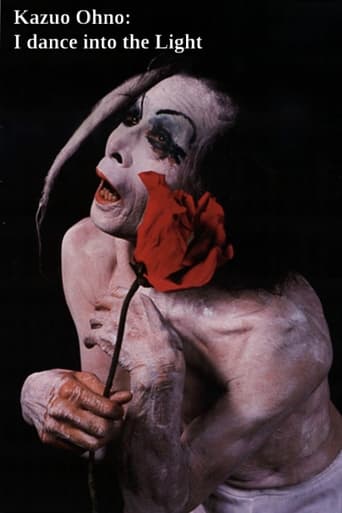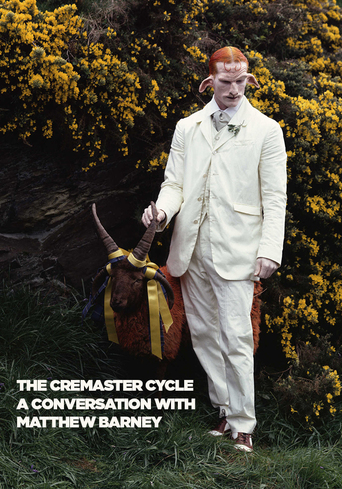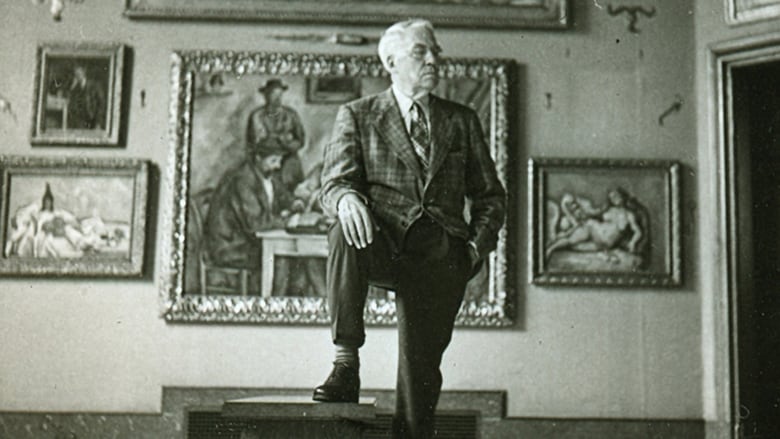
A gripping tale of intrigue and mystery in the art world, this film traces the history of a collection of Post-Impressionist paintings - worth billions - which became the subject of a power struggle after the death of its owner. Dr. Albert Barnes.
Similar titles




Reviews
Very Cool!!!
It's a good bad... and worth a popcorn matinée. While it's easy to lament what could have been...
By the time the dramatic fireworks start popping off, each one feels earned.
Like the great film, it's made with a great deal of visible affection both in front of and behind the camera.
SPOILERSThe major point this movie tries to make is that powerful forces conspired to defy the will of an art collector and move his art collection from it's residential suburban setting into the downtown area of the city. It does a good point of proving that this conspiracy did happen.What it doesn't do is prove the other point it kept hammering throughout the movie -- that this move was a tragic event. It's a shame that Barnes' will was not adhered to exactly as he wanted. Does that make it a tragedy? Does any instance of a will not being followed to the letter constitute a tragedy?It does not make a very good case for why the move downtown was a tragic event other than the wishes of the art collector were not followed.Some of the points the movie made that do not make logical sense:1) Several charities contributes gobs of money to move the museum downtown -- those charities could have easily donated the money instead to keep the Barnes where it was. The move makes no case at all about what would incite those charities to do that. Why would other charities donate money to keep the Barnes in its residential setting when the whole reason it was set there was to make it inaccessible to the public? Especially when the decision to put it there in the first place was seemingly made out of pettiness, revenge, and spite. Seems reasonable to me that outside charities would want to make the art collection more accessible to the public as a concession for donating millions and millions of dollars.2) The movie goes on and on about how tragic it is that the art was moved and now people won't get to experience the art in the way Barnes intended. I'm not sure I understand that point either. The movie said the new location laid out the art in the same exact way the original museum had it laid out -- that the blueprints for the rooms were modeled on the original. That means the argument the movie is trying to make that it is tragic that the art must be viewed in a city instead of in a residential neighborhood? It definitely stinks that Barnes' will was not followed to the letter, but the movie does make it seem like he wanted to control who got to see his art -- NY Times art critic = NO, plumber = YES. I don't know. What if his will stipulated that the art was to be burned to ashes to keep NY Times art critics away from it forever? Should that have been followed too?I'm sure this review will be downvoted because there do seem to be some very vocal advocates for keeping Barnes residential. I'm sorry, but the violation of Barnes' will doesn't quite raise to the level of tragedy based on what the movie is showing. Seems like making the art more accessible isn't a terrible outcome in the grand scheme of things either.
This is a passionately made documentary about how the rug was yanked out from under the legitimate trustees of the Barnes Foundation in order to move its priceless art collection to Philadelphia. I was lucky enough to have visited the Barnes when it was still in Merion. Barnes unintentionally created intractable problems for his collection when he put it in a quiet, affluent, suburban neighborhood, while at the same time intending that his collection should be for ordinary people. This has always puzzled me. Originally, he actually hung the paintings in his factory in Philadelphia so the workers could see them. When the power brokers zoomed in on the Barnes, the residents of Merion, on one hand, wanted the collection to stay in the neighborhood but, on the other hand, made it as difficult as possible for visitors to see it by restricting their numbers. Also, there was no way to reach it by public transportation.The septa station is not close by. This stubbornness on the part of the residents was their fatal flaw--and it made the Foundation vulnerable. By the time the town and county were willing to change the zoning, it was too late. The Annenbergs and the Pew foundation are no angels, but if Barnes had originally put his collection in Philadelphia in the first place, in a working-class neighborhood instead of in a wealthy suburb, he could have fulfilled his ideals about making art accessible to everyone, not just the elite. Unfortunately, even in its new location, it's still not easy to get in and see the collection. Visiting it has always been an elitist experience, ironically.
A remarkable, thought provoking documentary that I thoroughly enjoyed, even though I had no prior knowledge of the events – already well explained in previous reviews.I couldn't help but bring to mind the putative words of Pretty Boy Floyd:"Well, as through the world I've rambled, I've seen lots of funny menSome will rob you with a six-gun, and some with a fountain pen".There's an awful lot of robbing going on here, poignantly underlined in the scene as flamboyant signatures are exchanged by the mayor of Philadelphia and the Barnes Foundation as they signed their 'deal'. I can't say that any of the robbers in this film were particularly funny. In fact every time the story cried out for the other side of the story, a message on the screen said so-and-so declined to be appear on film, or declined to be interviewed, or declined to speak on the record whatever. I'm not sure how the film can be accused of being one sided when the other side wouldn't say anything. Actually the cowardly shame of their silence spoke volumes Kudos do, however, go to governor Rendell for actually appearing on film and putting his view, sincere as it appeared, although quite clearly having little regard for the fundamental issues at root – the clearly stated wishes and the will of Dr. Barnes about his art collection. In these reviews I've seen arguments about how it's going to be seen buy more people, in a more accessible location etc. But it's quite obviously not what Dr Barnes wanted for his collection. Call me old fashioned but I think his wishes should have been be accorded priority.
The Art of the Steal—another great doc in what's already being dubbed the best documentary year in a long time—does something seemingly impossible. It crafts a compelling and informative story about art galleries. It sounds as dry as the Sahara on paper, but the story is surprisingly engaging. I objected to director Don Argott's almost completely one-sided approach to the material, but as long as you keep that in mind throughout, this can be a truly rewarding experience.The film centers around Dr. Albert C. Barnes, a wealthy, anti-establishment suburban Philadelphia native who, in the first half of the 20th century, amassed one of the most impressive and expensive private art collections in history. The Barnes Collection consists of 181 Renoirs, 69 Cezannes, 59 Matisses, 46 Picassos, 16 Modiglianis and seven van Goghs, among other pieces of work, and it resided in Merion, PA, just outside of Philadelphia. When he died, an epic struggle for power and control broke out which has yet to be completely settled. If anything, it has escalated since Barnes' death.Barnes despised the rich, famous, and powerful of Philadelphia. His number one enemy was Walter Annenberg, who operated the Philadelphia Inquirer. And Barnes made his collection incredibly exclusive as a result. As one commenter stated, Barnes denied access to the New York Times art critic, but he'd let the town plumber come in any time of day. After Barnes suddenly died in a car crash, the vultures began to circle, but his will outlined very specific instruction on what should happen to his art. Control over the art passed down to a number of his "disciples," and it was made clear that the art wouldn't be moved.After the last of the disciples died, control went to Lincoln University, a small black college. Their presidents slowly shifted away from Barnes' wishes over time. One president, Richard H. Glanton, took the art on tour and attempted to expand hours to make the art more accessible. Glanton was despised by those loyal to Barnes (many of whom are the primary interview subjects in the film), but he was small potatoes to what the politicians and non-profit organizations did next.The story has the capability to frustrate you. Going against a man's will seems like a really despicable thing to do. But when you sit back and think about what's actually happening, some interesting questions are raised. What's really best: to keep this priceless art hidden at the request of a somewhat bitter man who died more than 60 years ago, or to open it up to the public and let everyone learn and appreciate the incredible work on display? This might be an instance in which what's best and what's right are in opposition, but the film raises the questions. Unfortunately, it doesn't take the time to explore them.The film is incredibly one-sided, more so than any documentary, outside the Michael Moore catalog, that I've seen in a long time. The only person interviewed that isn't a Barnes disciple is Glanton, and it appears he's only on hand because he wants to prove he wasn't as bad as what came after him.This year is already being talked up as one of the best in a long time for documentaries. Joan Rivers: A Piece of Work was one of my favorite films from the first part of the year. Inside Job and Countdown to Zero received very positive buzz out of Cannes. And Exit Through the Gift Shop and Restrepo, among others, have already opened to rave reviews. And that's not even discussing what's coming later this year. I've never been a huge fan of documentaries. Perhaps that's because I was a student and didn't care to sit through a lecture, no matter how interesting the subject might have been. This year, that has definitely changed.
Top Streaming Movies














